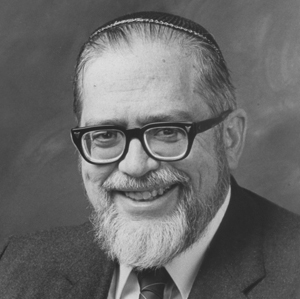Nuke Experts Disagree Over Waste, Safety Issues
 Columbia Daily Spectator, Volume CVI, Number 79, 8 March 1982
Columbia Daily Spectator, Volume CVI, Number 79, 8 March 1982
By JOHN ROGOVIN
Despite the ongoing glut of oil, the US still faces the crucial choice of whether to develop nuclear power reactors for the production of electricity. The Reagan Administration supports the nuclear industry, but many critics are still not convinced that nuclear power is safe enough.
And academics, the researchers and teachers who will be charged with advancing—or halting —the industry's technological growth, are divided on the issue of nuclear power.
Supporters of the nuclear industry like Herbert Goldstein, professor of applied physics and nuclear engineering at Columbia, view nuclear power as safer and more economical than coal. They look for nuclear power's contribution to total electricity production in the United States to rise from 12-13 percent to about 25 percent.
"The general conclusion is that nuclear power is one of the safer methods of electricity production," Goldstein said. "We're no longer at the laboratory stage—it's working now."
Dr. Michio Kaku, assistant professor of nuclear physics at the City College of New York, joins other critics of the industry in claiming that the United States is accepting a "Faustian Bargain" by "pushing the state of the art of nuclear technology."
"In an unforgiving technology like nuclear power, the slightest oversight might blow up in your face," Kaku warned. "There are 3,000 reported transiences in the industry a year—any one could set off a cascading sequence of multiple failures."
Two of the better-known nuclear power plant accidents—one last month at the Ginna plant in Rochester and at Three Mile Island in Pennsylvania—did not in and of themselves directly threaten public safety. Yet the danger to the public might lie much deeper than in a mere count of the amount of radiation released from the two plants would indicate.
The lesson of TMI and Ginna, claimed Goldstein, was that nuclear power poses a negligible harm to the public. Goldstein agreed with studies released after the TMI accident that classified the overriding problem there "not as a hardware but as a managerial one." The public should be reassured that the engineering saved the day, said Goldstein, adding that the human error cited in reports by the Nuclear Regulatory Commission—including insufficient training of operators—could be "worked out" by the industry.
Kaku, however, preferred to blame "unfinished" nuclear technology, noting problems with gauging the water level in a reactor vessel and detecting whether the relief valve (PORV) for the core at TMI was open or closed.
There are numerous "extras" that the utilities could install on reactors to make them safer, but they are not required and the company is not assured of getting its money back on the rate base, said Kaku. The operators did the best that they could with the information and equipment available, he claimed.
Scientists had never foreseen the peculiarities of the accident at TMI, and the NRC was forced to classify it as Class 9—the most serious type of nuclear power accident.
Yet the Ginna incident last month is perhaps more frightening than TMI, representing "a perfect textbook case" of a steam generator simply aging, corroding, and suffering a rupture, Kaku claimed. The accident occurred only ten years into Ginna's projected 25-30 year lifespan, he noted.
Another danger is "embrittlement," the development of undetected cracks on the inside of reactor vessels, Kaku said. The only way to find them, said Kaku, would be to X-ray the vessels—and the industry has so far shown no interest in such an investment. X-raying is not required by the NRC, but it could be the only way of preventing accidents, he claimed.
The persistent problem of waste from a nuclear power plant also poses dangers, Kaku said. At this time, low-to-intermediary-level waste is disposed of through several methods, while high-level waste is stored on site in pools of water.
Goldstein stressed that there was no danger in transporting the low-level waste. He lives a few hundred yards from the Long Island Expressway and is "not worried about transporting nuclear materials" on the highway, he noted.
The issue of nuclear power has become purely political, said Goldstein. Queensborough President Donald Manes, for instance, manipulates the issue for political gain, Goldstein charged. "There are more lies and deceits over nuclear transport than anything," he asserted.
Kaku, on the other hand, termed present methods of disposing of waste insufficient. Low-level waste has been dumped in barrels off the coast of New York City—and of nearly 85,000 barrels, nearly 25 percent have split open, Kaku claimed. Kaku also complained of the "grave danger" posed to the environment by transport of waste, which would possibly contaminate the water table and the land along highways in the event of an accident, he noted.
